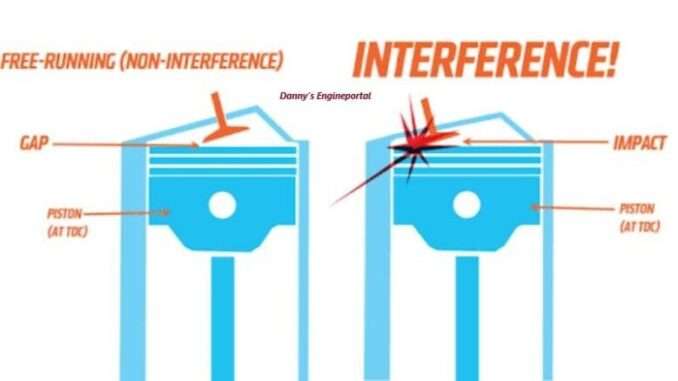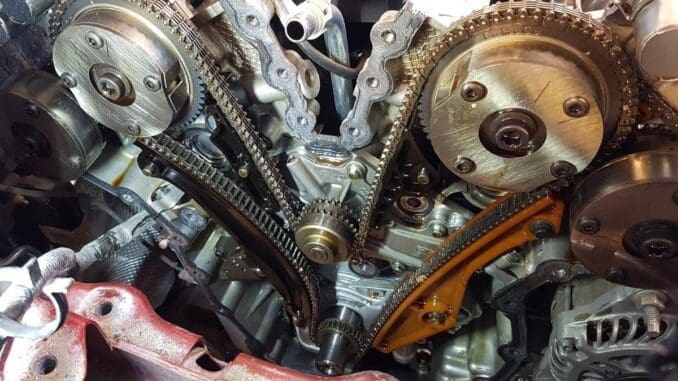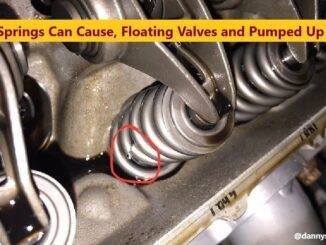
So, the term, interference or non-interference engine, makes a big difference, if you ever have a timing problem.
And, if you ever have a broken timing belt or chain !! The cost of repairs for a interference or non-interference engine, is definitely not the same.
That’s why, timing belt or chain replacement, is more important than you think. But, the maintenance, for a interference or non-interference engine, is totally different.
What’s better, Interference Or Non Interference Engines? Manufactures seem to be moving more towards, interference engines. This is due to the fact that, interference engines, often have a higher compression ratio. And, if maintained properly, they both should last a long time.
The timing belt or chain must turn the crankshaft, exactly two revolutions for every one revolution of the camshaft.

So, when the camshaft turns, it opens and closes the valves. Furthermore, either one, may have a timing belt or chain.
What is the real difference:
- So, in an interference engine, if a timing belt breaks, the engine might be severely damaged.
- But, with a non interference engine “Also Known As A Free-Running Engine” the engine will stop. But, damage, will not be as severe.
When the camshaft turns, it opens and closes the valves. The valve has to close and open, at the exact moment in relation to the movement of the pistons. Incorrect timing, can cause a multitude of issues. Most often, this begins as starting problems. Because, the timing of all the individual components, is no longer in sync.
Interference Or Non-Interference – Why Could You Have Damage

Interference
Consequently, with an interference engine, valves that are fully open, will be hit by the pistons. But, only when the piston, comes up to the top of its stroke.
Non-Interference
However, with a non-interference engine “Also Known As A Free-Running Engine”. Consequently, there is still some clearance, between fully open valves and a piston, at the top of it’s stroke.
So, Is One Design Better Than The Other

Advantages Of Interference Engines
Many automakers prefer using interference engines, simply because the design offers, an improved compression ratio. So, as you may already know, compression ratio, is the ratio of the volume of an engine’s combustion chamber. Therefore, by filling the engine with more combustion, it allows for increased performance and fuel efficiency.
Disadvantages Of Interference Engines
Consequently, by design, interference engines, are susceptible to critical failure, in the event of a timing belt failure. So, if the timing belt snaps, the pistons will smash into the valves. Causing serious (and costly) engine damage. But, if the timing belt on a non interference engine breaks, the pistons won’t make contact with the valves. Therefore, there’s little risk, of catastrophic engine damage.

Conclusion
So, when it comes to automotive maintenance schedules, they exist for good reason. Oil, spark plugs and most of all, timing belts, should always be changes at recommended times. Because, letting them go into “borrowed time” could lead to auto repairs, that outweigh the value of the vehicle. Finally, the risk highly depends on, whether you have an, interference or non-interference engine.
BY DANNY BENDER




